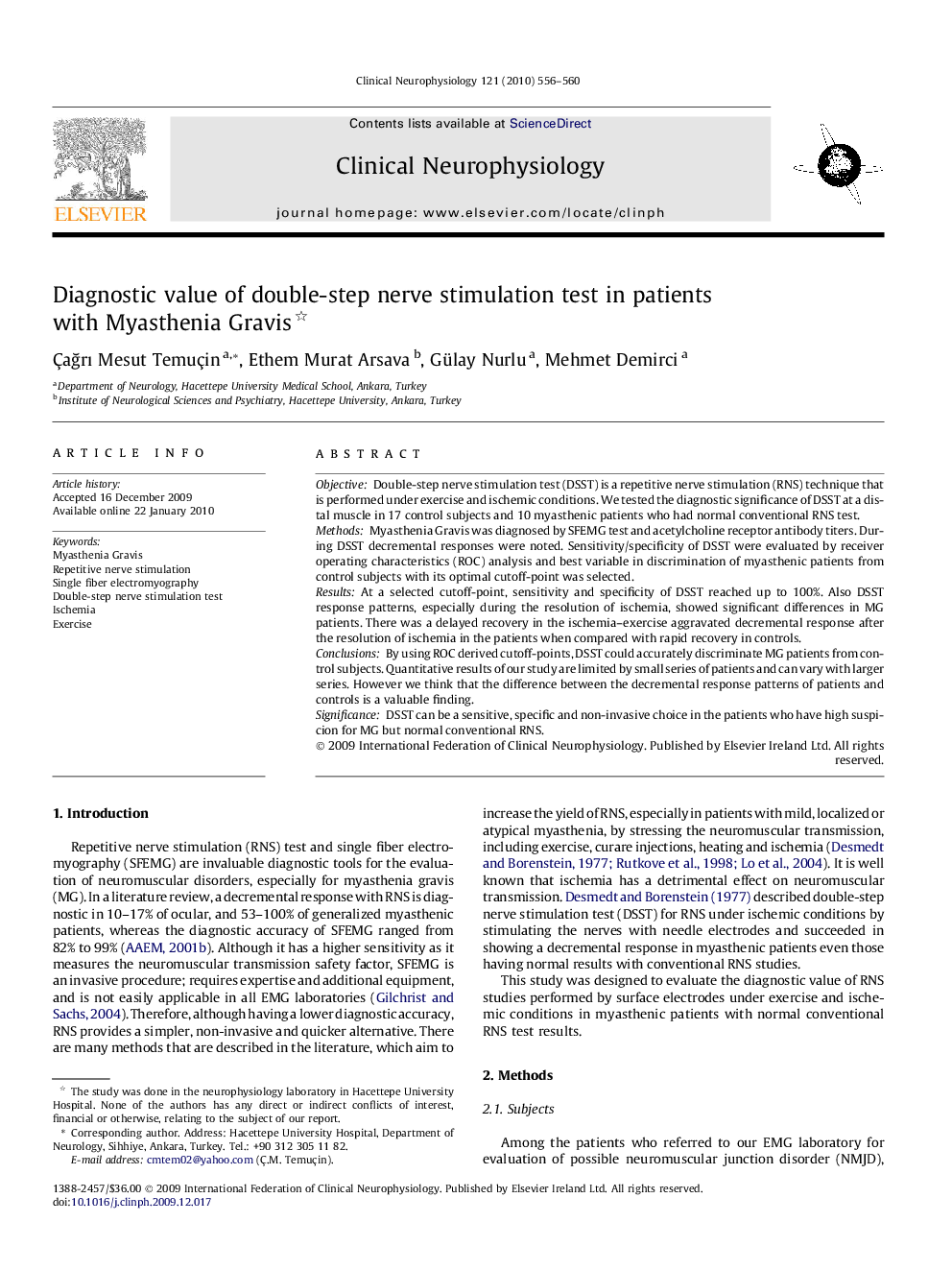| Article ID | Journal | Published Year | Pages | File Type |
|---|---|---|---|---|
| 6009198 | Clinical Neurophysiology | 2010 | 5 Pages |
ObjectiveDouble-step nerve stimulation test (DSST) is a repetitive nerve stimulation (RNS) technique that is performed under exercise and ischemic conditions. We tested the diagnostic significance of DSST at a distal muscle in 17 control subjects and 10 myasthenic patients who had normal conventional RNS test.MethodsMyasthenia Gravis was diagnosed by SFEMG test and acetylcholine receptor antibody titers. During DSST decremental responses were noted. Sensitivity/specificity of DSST were evaluated by receiver operating characteristics (ROC) analysis and best variable in discrimination of myasthenic patients from control subjects with its optimal cutoff-point was selected.ResultsAt a selected cutoff-point, sensitivity and specificity of DSST reached up to 100%. Also DSST response patterns, especially during the resolution of ischemia, showed significant differences in MG patients. There was a delayed recovery in the ischemia-exercise aggravated decremental response after the resolution of ischemia in the patients when compared with rapid recovery in controls.ConclusionsBy using ROC derived cutoff-points, DSST could accurately discriminate MG patients from control subjects. Quantitative results of our study are limited by small series of patients and can vary with larger series. However we think that the difference between the decremental response patterns of patients and controls is a valuable finding.SignificanceDSST can be a sensitive, specific and non-invasive choice in the patients who have high suspicion for MG but normal conventional RNS.
